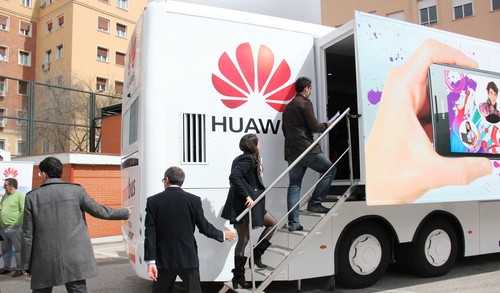Suppliers Cut Off HuaweiSuppliers Cut Off Huawei
If Android is to 'fork' following Huawei's isolation, the enterprise needs to begin adjusting the threat models used around employee device use.

It's easy to dismiss last week's Executive Order as posturing in a complicated game of US-China trade relations. Imposed tariffs can always be revoked at a later date.
But the Executive Order issued last Friday bans the sale of many products to the entire Huawei 70-company complex as well. One is not allowed to do business with them, period.
And, by the way, it's not just them. ZTE (which previously paid a massive fine to remain in US business) is also on the "Entity List." Even though the enforcement mechanism for this EO is yet to be released, some major players have reacted to the policy swing with a snap in their step.
Bloomberg reports that, "Chipmakers including Intel Corp., Qualcomm Inc., Xilinx Inc. and Broadcom Inc. have told their employees they will not supply Huawei till further notice, according to people familiar with their actions. Alphabet Inc.'s Google cut off the supply of hardware and some software services to the Chinese giant, another person familiar said, asking not to be identified discussing private matters."
The swiftness of the response as well as the aspect of actually not selling product means those players knew this was coming. They are showing a lack of reactive, flubbering surprise in what they do as well as a uniformity in their common actions. They're serious about this.
Android will no doubt fracture if Huawei has to use the open source flavor of the operating system in its upcoming handsets. Even though the handset maker points to their OS work since 2012, the services which connect to that OS have to mesh for the best performance. And Google will see that they don't by withholding updates.
A new, less secure off-shoot OS must inevitably result when an OS has been fractured/forked from the main body of code. Should it survive and the variant gain usage (these guys have sold a lot of hardware), unpatched OS vulns can skyrocket unless they are controlled. The need for extra security support falls on the Chinese. How well they will perform this task remains an open question, but it's a real security risk to just hope that there will not be problems. Android has faced this kind of fracture problem before, and Google implemented a version control system that eventually got patches installed.
But Google is only committed to servicing existing product. Open source-flavor Android means it won't be put into a position where it has to provide support.
The Android account tweeted that, "We assure you while we are complying with all US gov't requirements, services like Google Play & security from Google Play Protect will keep functioning on your existing Huawei device."
For now.
The enterprise needs to begin adjusting the threat models used around employee device use to take this upcoming Android change into account. It may happen quickly, even though the EO's enforcement details currently remain opaque.
Huawei has delivered security updates for its customers in the past, and it seems that the EO means it will have to continue to do so. Bugs may yet get squashed over time by the world's currently second-largest handset maker.
But the effort needed to deal with another OS variant (bug patched or not) controlling devices that are routinely used by employees for their business can only complicate enterprise security procedures.
— Larry Loeb has written for many of the last century's major "dead tree" computer magazines, having been, among other things, a consulting editor for BYTE magazine and senior editor for the launch of WebWeek.
Read more about:
Security NowAbout the Author
You May Also Like




